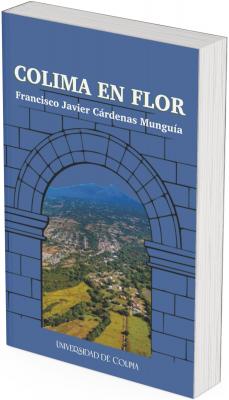Colima en flor
Keywords:
Urban landscape, architecture, research, identitySynopsis
“Landscape” is almost a synonym of Colima. “Sustainable” seems to be its most necessary adjective. I came to know Colima about 10 years ago. Invited by my friend, Francisco Cárdenas, and then I returned on various occasions to carry out conferences, courses, etc. That made it possible for me to traverse the city, the nearby areas, and a good chunk of the state, enjoy a memorable landscape and, worrisomely, observe the contrasts and problematics that Cárdenas himself (Paco to his friends), would show.
But above everything else, what stays in my mind and in my yearning to return to the landscape climate that is truly lived there. From balcony of my hotel room above the central square, as well as from the small rural roads. It seems to be a Mexico from a better time, one which once led me to explore Mexico, and I’m afraid that there are many other enchanting “Mexicos” which are also found in the interphase with the risk of accelerated disturbances. Mexico is one of the countries of Latin America and the world, where the concept of landscape is understood without speaking, its scale, its colors, its ethnic mixes, its music, its patrimony, in a nutshell, almost everything speaks of a culture which was able to last in a unique syncretism of the past (of many thousands of years), present, in most of its rural places, , and future, from the way which its populations keep popular and ancestral values.
But it is also a country where previous wisdom contrasts with the proliferation of modern traits which are frankly intolerable, such as the change of construction with earth to the inadmissible use of cement blocks. What’s going on? From quality to Quantity, from what is beautiful to what is vulgar, from the artisanal to the poor industry of the construction of peripheral ways.
Downloads
References
CÁRDENAS Munguía, Francisco Javier et al (2007). Barrio de San José: Paisaje urbano y vida social. Universidad de Colima, Secretaría de Cultura de Gobierno del Estado de Colima y PACMyC, Colima, México.
CÁRDENAS Munguía, Francisco Javier, (2004). Shared Responsability in Small Sustainable Comunities. Conference on Passive and Low Energy Architecture, The Netherlands, Países Bajos .
CORTÉS, Cortés Abel et al (2007). Geología de los volcanes de Colima. Universidad Nacional Autónoma de México, México.
CATALUÑA, Dafne y Fiz Javier (2014). Psicología Positiva: Pautas para incrementar tu felicidad. Ediciones Dauro, Madrid, España.
DE SANTIAGO Fuentes, Santiago, (1996). Flores de papel. Dos generaciones, dos testimonios. Gobierno del estado de Colima, Instituto Colimense de Cultura, Dirección General de Culturas Populares, Coordinación Nacional de Descentralización, Colima, México.
DIARIO DE COLIMA (2008). Periódico Diario de Colima, artículo "Embellecerán los Camellones de las Avenidas de V. de Álvarez", día 5 de enero de 2008, Colima, México.
DIARIO DE COLIMA (2007). Periódico Diario de Colima, artículo "Encuesta Calidad de Vida le da a Colima el Primer Lugar", 25 de junio de 2007, Colima, México.
ERARD, Michael (1989). Architercture Patterns That Promote Community. En revista "TechnologyReview" January 1989, The Massachussets Institute of Technology, Cambridge, Mass., Estados Unidos de América.
GOBIERNO DEL ESTADO DE COLIMA (1997). Reglamento de Zonificación para el Estado de Colima. El Estado de Colima, Periódico del Gobierno Constitucional, Colima, México.
GONZÁLEZ Larios, Carlos Alberto (2005). Percepción y características de la vegetación y la disposición espacial y formal de los jardines en la ciudad de Colima, Tesis, Universidad de Colima, Facultad de Arquitectura y Diseño, Colima, México.
HERNÁNDEZ Espinosa, Francisco (1968). El Colima de ayer. Gobierno del Estado de Colima, Colima, México.
INEGI (2005), Conteo de población. Instituto Nacional de Estadística y Geografía, México.
JELLICOE, Geoffrey y Susan (2004). El paisaje del hombre. La conformación del entorno desde la prehistoria hasta nuestros días. Editorial Gustavo Gili. Barcelona, España.
LIVETSKY, Gilles (2006). Los tiempos hipermodernos. Anagrama, Barcelona, España.
LLEÓ DE LA VIÑA, Jaime (1982). Protección del Medio Ambiente, 56 Cuadernos, Biblioteca de Autores Cristianos de la Editorial Católica, Madrid, España.
OBLITAS Luis A., Guadalupe (2008). "Psicología de la salud: Una ciencia del bienestar y la felicidad" en Av. Psicol. 16 (1) 2008 enero-diciembre, UNIFÉ, México. https://doi.org/10.33539/avpsicol.2008.v16.2733
OCHOA López, Alejandro (2002). Criterios Bioclimáticos para la Planificación Urbana. Caracterización de Dos Entornos Urbanos de la Ciudad de Colima. Tesis, Universidad de Colima, Facultad de Arquitectura y Diseño, Colima, México.
ORTOLL, Servando (1987). Por Tierra de Cocos y Palmeras. Instituto Mora, México.
SORIANO (2014). Núñez, Rodolfo, "Salud y Religión en la Encuesta IMDOSOC 2013", revista Signo de los tiempos, moral social para el mundo de hoy, marzo 2014. Instituto Mexicano de Doctrina Social Cristiana, México, D. F.
PADILLA-VELARDE, Eloy et al (2006). "Riqueza y biogeografía de la flora arbórea del estado de Colima, México", Revista Mexicana de Biodiversidad No.77. Instituto de Ecología de la UNAM, México. https://doi.org/10.22201/ib.20078706e.2006.002.337
PARROQUIAS DEL OBISPADO DE COLIMA, llamadas telefónicas y http://www.diosesisdecolima.org enero de 2008.
PESCI, Rubén (2007). Ambitectura. Hacia un tratado de arquitectura, ciudad y ambiente. Editorial CEPA, Ediciones Al Margen, La Plata, Argentina.
PETER TOMPKINS y Christopher Bird (1973), La Vida Secreta de las Plantas. Capitán Swiling Libros, Madrid, España.
QUIROGA Martínez, Rayen (2003). Naturaleza, Culturas y Necesidades humanas. Ensayos de Transformación. PNUMA, Universidad Bolivariana, Santiago de Chile, Chile.
"Relaciones de la Provincia de Amula (1579)" en Pretextos 7, 1993. Archivo Histórico del Municipio de Colima, Colima, México.
ROMERO Aceves, Ricardo (1984). Colima ensayo enciclopédico. Costa Amic Editores, México.
SEDESOL - SEMARNAT - Gobierno del Estado de Colima, (2003), Programa Estatal de Ordenamiento Territorial 2002, Gobierno del Estado de Colima, Colima, México.
SEDESOL, Gobierno del estado de Colima (2010), Sistema de Apoyo para la Planeación del PDZP. Gobierno del Estado de Colima, Colima, México.
VALENCIA, Salazar, J. Jesús, (1992), Comala Ayer, Comala Hoy. Universidad de Colima y H. Ayuntamiento de Comala.

Published
Categories
License

This work is licensed under a Creative Commons Attribution-NonCommercial-ShareAlike 4.0 International License.







